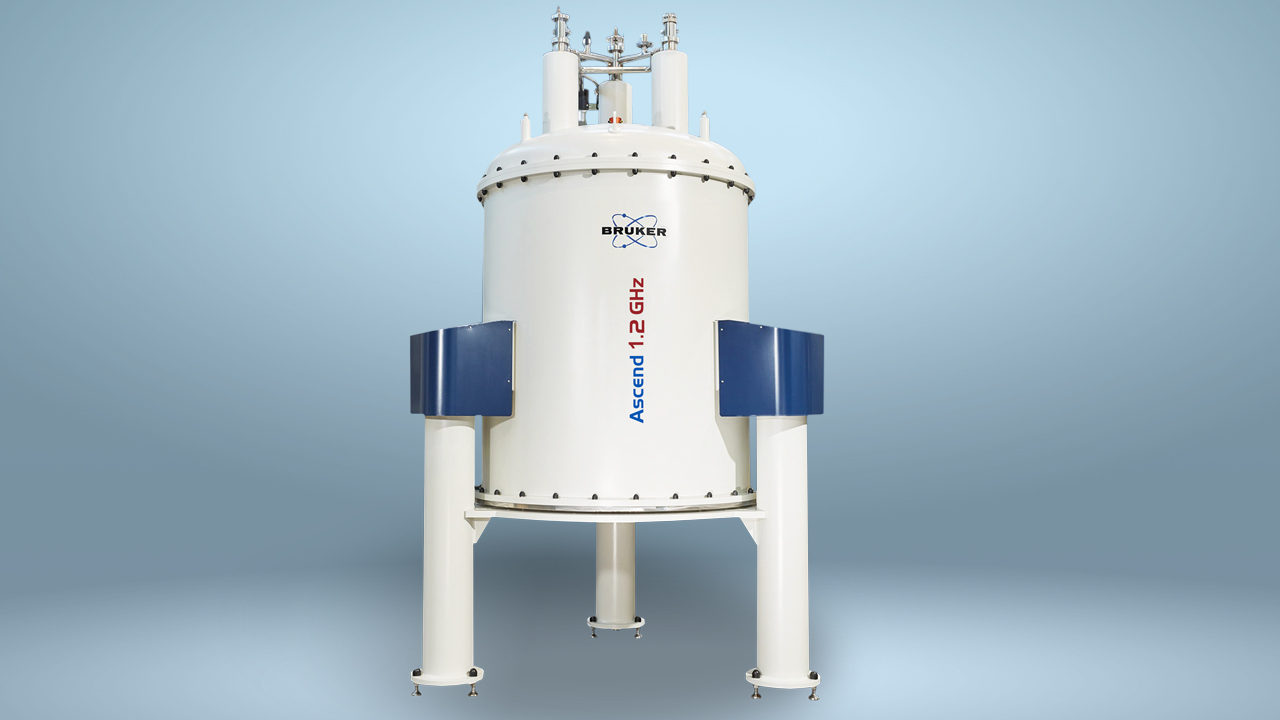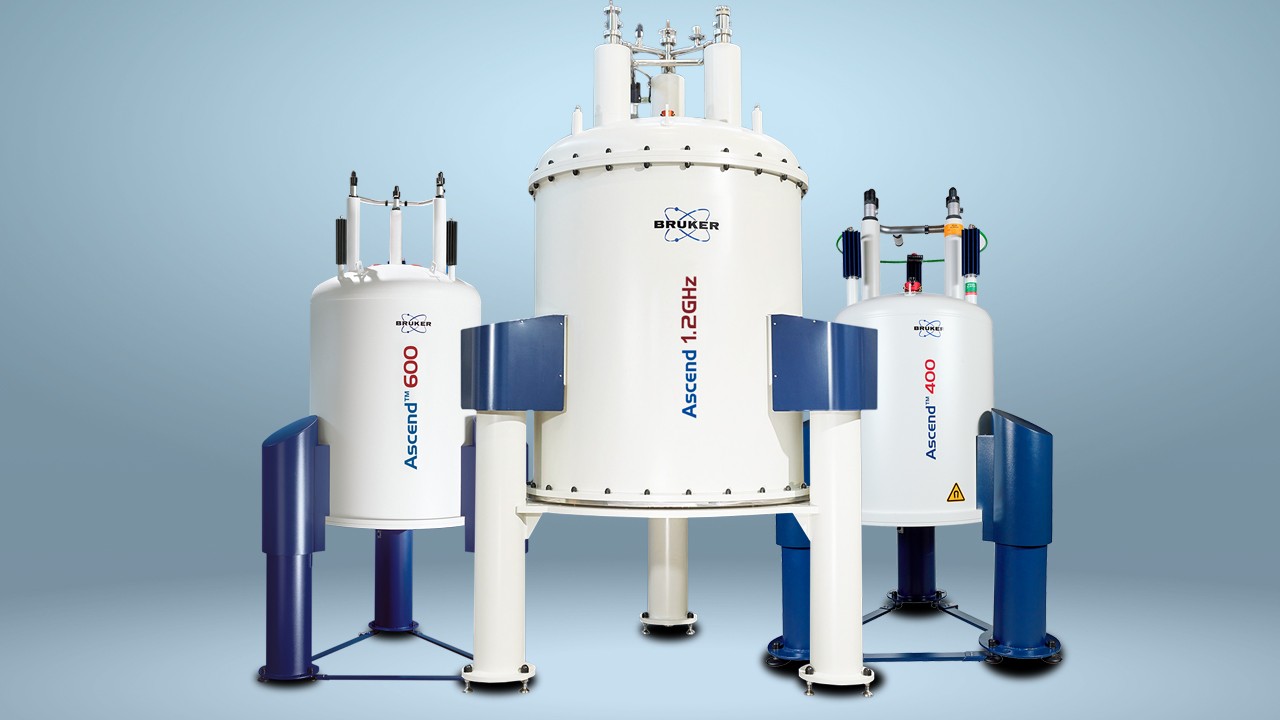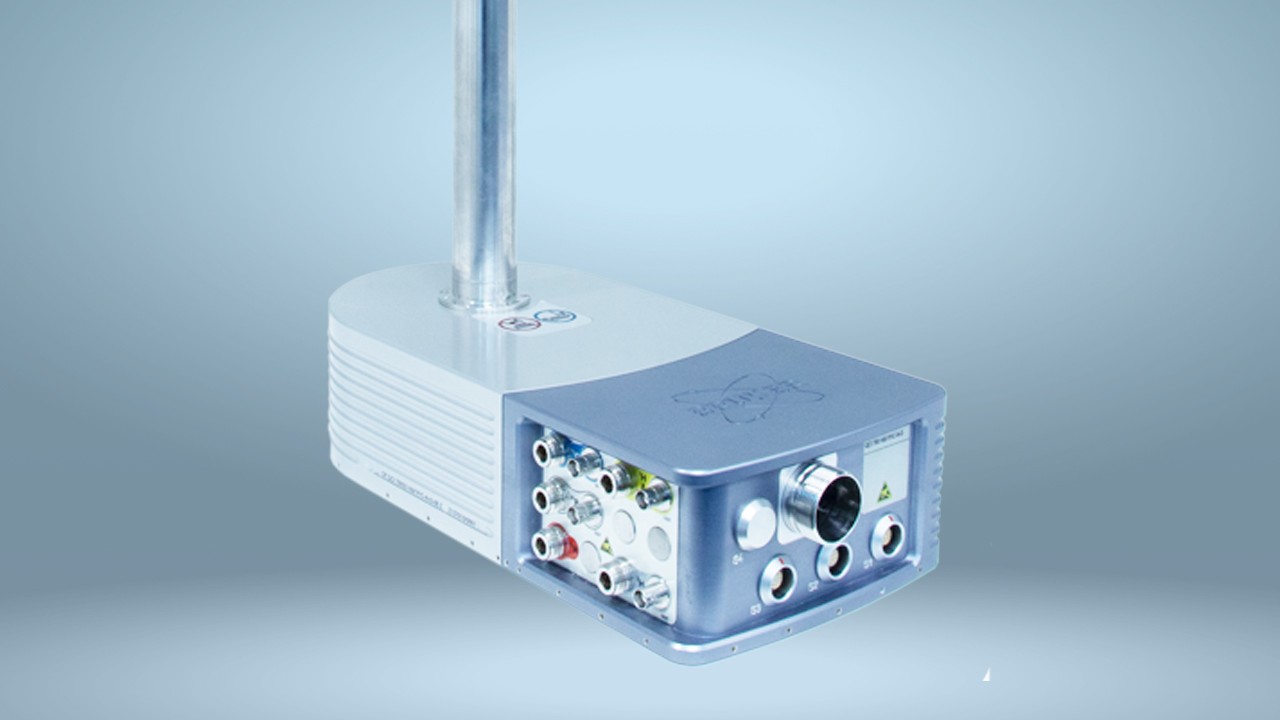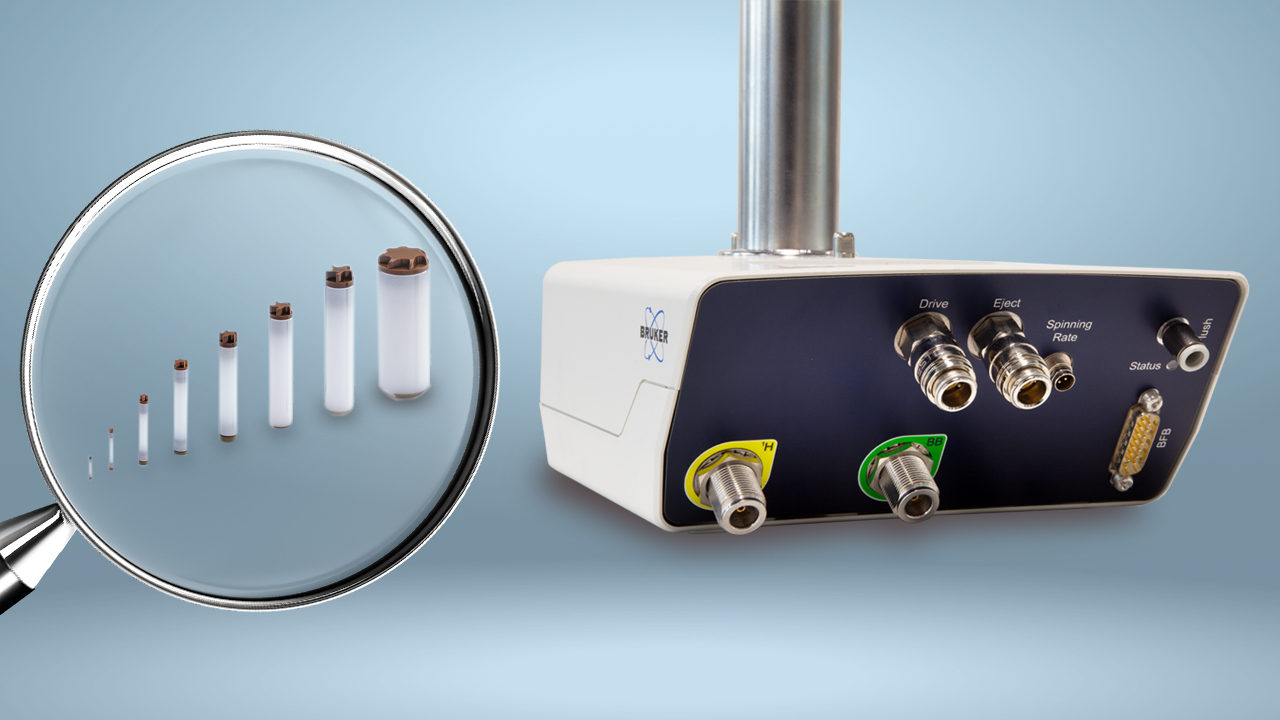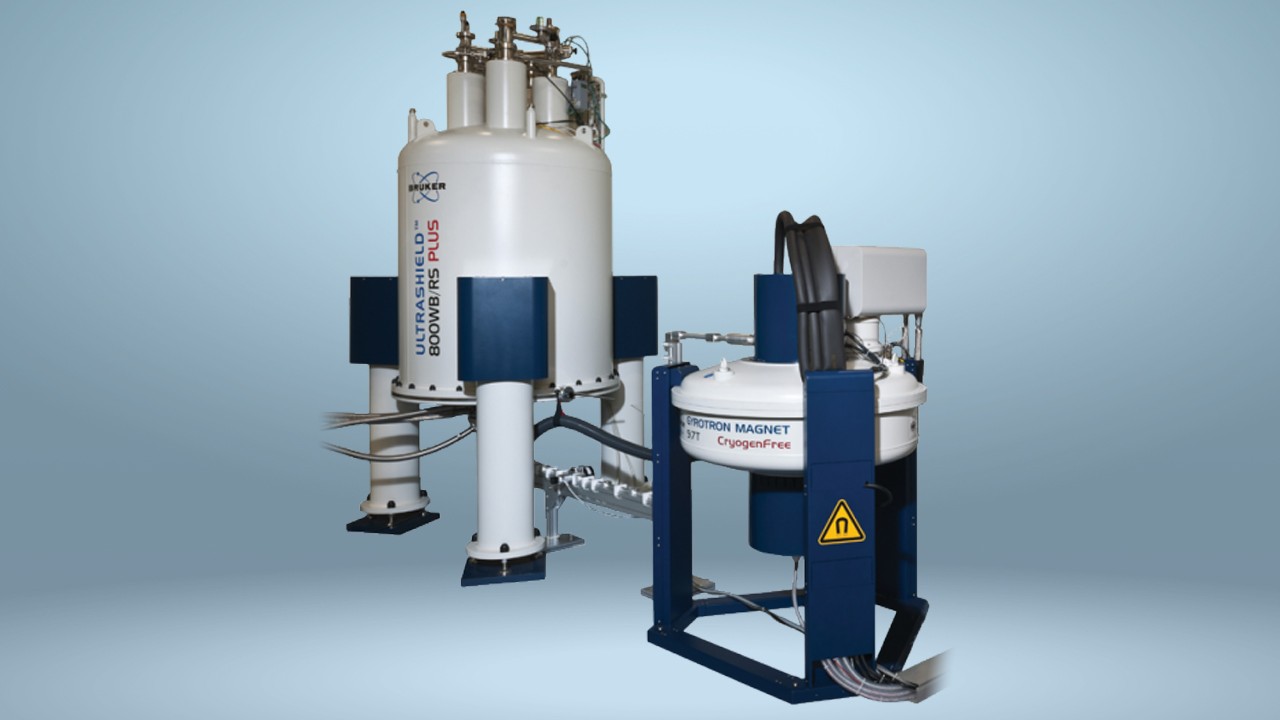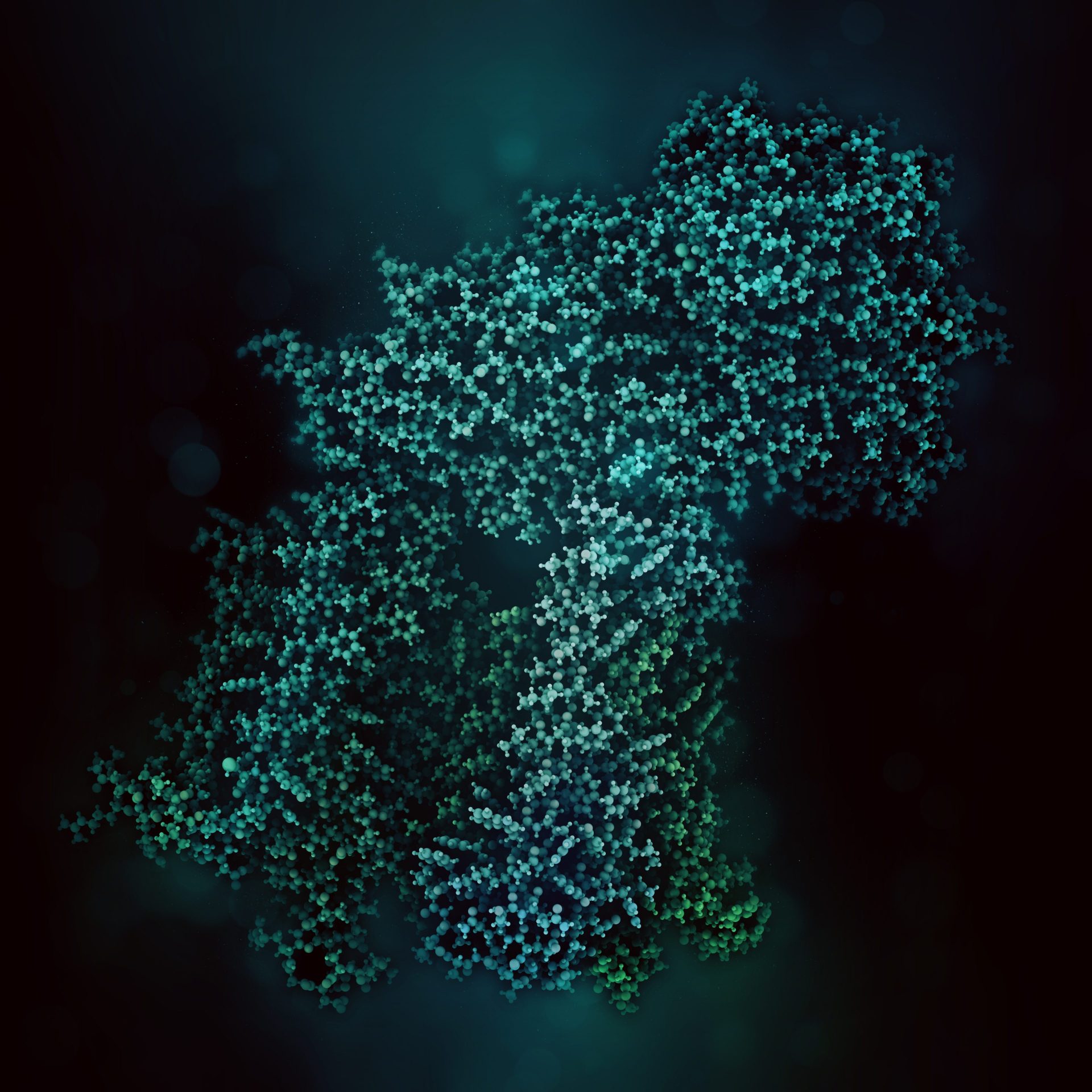

Structural Biology
Bruker has been a pioneer in the development of instrumentation and methods for protein and nucleic-acid NMR. The Bruker BioSpin AVANCE™ series of spectrometers has become a well-established standard for structural biology applications in a large number of laboratories around the world. Magnetic fields strengths up to 1000 MHz today allow large proteins up to several tens of Kilodaltons to be studied by NMR. The wide selection of cryoprobes, the introduction of DNP-NMR and specialized E-Free solid-state NMR probes have revolutionized the impact of NMR on structural biology.
NMR can not only provide structural information but is uniquely positioned to elucidate dynamic processes in proteins and nucleic acids. NMR can also provide real time insight into the interactions between biomolecules. The entire range from slow processes that occur in seconds or minutes all the way to motions in the picosecond timescale can be investigated. Optimized and semiautomated workflows allow the researcher to determine and visualize the dynamic behavior of proteins with a large suite of experiments.
Intrinsically disordered protein (IDP) are proteins that are unable to fold into a stable or ordered three-dimensional structure. Unlike folded proteins, IDPs are characterized by a high degree of disorder, local mobility and high dynamicity. Due to their lack of structure and high mobility, studying IDPs can be challenging. They cannot be characterized using traditional X-ray crystallography or Cryo-EM techniques, so nuclear magnetic resonance (NMR) is the tool of choice. NMR has evolved into a powerful technique in structural biology for studying the dynamics of proteins, including IDPs. It is now possible to overcome the problems of incomplete assignment, low chemical shift dispersion, and an inability to detect post-translational modifications using new techniques. This area has greatly benefitted from recent developments such as ultra high field instruments (> 1GHz) and probe technologies such as 13C and 15N optimized cryoprobes.
The membranes found in all cells are crucial to life’s processes as they partition the cell into different volumes and provide communication between them. Many protein complexes, found in cellular membranes, are involved in key processes such as respiration, photosynthesis, protein production, and cellular signaling. Consequently, many of medicine’s most important drug targets are to be found in cell membranes. Membrane proteins ca be studied with liquid state NMR techniques when they can be incorporated in smaller soluble membrane mimetic systems such as micelles, bicelles or nanodiscs. Other proteins are amenable to study with solid state NMR in larger bicelles, bicelles or actual cellular membranes. In this area the use of DNP has greatly increased the number of proteins that can successfully studied.
